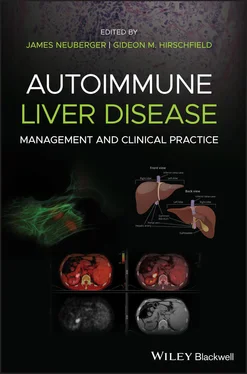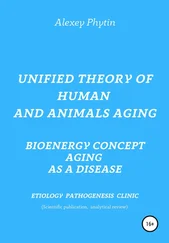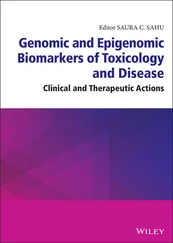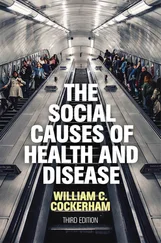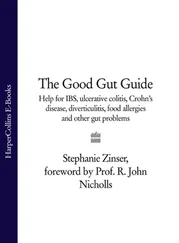GGT is an enzyme that can be induced by several stimuli such as drugs and alcohol. It is mainly localized in hepatocytes and biliary epithelia, and is also present in extrahepatic tissues such as kidney, spleen, pancreas, heart, lung, and brain, but not bone. The lack of GGT in bone can be used to distinguish a liver source from a bone source of a raised ALP. GGT is more liver specific than ALP, although during cholestasis is less specific since it can be influenced by other factors such as alcohol, fat, and drugs. A GGT/ALP ratio over 2.5 may point to alcohol abuse, although up to one‐third of those who abuse alcohol (>80 g/day) have a normal GGT. A normal GGT in patients with elevated liver ALP isoenzyme should raise the suspicion of benign recurrent intrahepatic cholestasis.
1 1 Ober, E.A. and Lemaigre, F.P. (2018). Development of the liver: insights into organ and tissue morphogenesis. J. Hepatol. 68: 1049–1062.
2 2 Roskams, T.A., Theise, N.D., Balabaud, C. et al. (2004). Nomenclature of the finer branches of the biliary tree: canals, ductules, and ductular reactions in human livers. Hepatology 39: 1739–1745.
3 3 Halilbasic, E., Claudel, T., and Trauner, M. (2013). Bile acid transporters and regulatory nuclear receptors in the liver and beyond. J. Hepatol. 58 (1): 155–168.
4 4 Boyer, J.L. (2013). Bile formation and secretion. Compr. Physiol. 3: 1035–1078.
5 5 Trauner, M., Fuchs, C.D., Halilbasic, E., and Paumgartner, G. (2017). New therapeutic concepts in bile acid transport and signaling for management of cholestasis. Hepatology 65 (4): 1393–1404.
6 6 Overi, D., Carpino, G., Cardinale, V. et al. (2018). Contribution of resident stem cells to liver and biliary tree regeneration in human diseases. Int. J. Mol. Sci. 19 (10): 2917. https://doi.org/10.3390/ijms19102917.
7 7 Cardinale, V., Wang, Y., Carpino, G. et al. (2011). Multipotent stem/progenitor cells in human biliary tree give rise to hepatocytes, cholangiocytes, and pancreatic islets. Hepatology 54: 2159–2172.
8 8 Fabris, L., Spirli, C., Cadamuro, M. et al. (2017). Emerging concepts in biliary repair and fibrosis. Am. J. Physiol. Gastrointest. Liver Physiol. 313: G102–G116.
9 9 Strazzabosco, M., Fiorotto, R., Cadamuro, M. et al. (2018). Pathophysiologic implications of innate immunity and autoinflammation in the biliary epithelium. Biochim. Biophys. Acta 1864: 1374–1379.
2 Concepts of Autoimmunity Relevant to Autoimmune Liver Diseases
Isaiah G. Roepe1 and John M. Vierling2
1 Baylor College of Medicine, Houston, TX, USA
2 Departments of Medicine and Surgery, Section of Gastroenterology and Hepatology, Division of Abdominal Transplantation, Baylor College of Medicine, Houston, TX, USA
Knowledge of the concepts of autoimmunity can aid gastroenterologists and hepatologists in management and counseling of patients with autoimmune liver diseases and in understanding the rationales and sites of action of therapies. This chapter addresses major themes: innate and adaptive immunity in the context of the liver as an immune organ; generation and maintenance of tolerance to autoantigens; and risk factors for autoimmunity. The themes discussed also include: loss of immune tolerance to autoantigens and perpetuation of autoimmune diseases; and prospects for prevention of autoimmunity and therapeutic control of autoimmune diseases. Bacterial, fungal or viral infections can instigate innate and adaptive immune responses that result in autoimmunity. Vitamin D deficiency is epidemiologically associated with risk of autoimmunity. The increasing incidence of autoimmunity and inflammatory diseases observed worldwide is correlated with changes in environmental factors, including a more modern lifestyle, improved hygiene, a Western diet, use of antibiotics, and elimination of childhood parasitic infections.
Keywords adaptive immunity; autoantigens; autoimmune liver diseases; autoimmunity prevention; immune homeostasis maintenance; immune tolerance; innate immune organ; therapeutic control
Autoimmunity results from the complex interplay of genetic, epigenetic, immunologic, and environmental factors.
Environmental triggers initiate loss of tolerance to autoantigens in genetically susceptible individuals.
Susceptible individuals must have inflammatory innate immune responses, human leukocyte antigen (HLA) alleles capable of autoantigen presentation to autoreactive T‐cell receptors, and autoreactive B cells to develop a specific autoimmune disease.
Subsequently, additional immunologic mechanisms perpetuate chronic progressive inflammatory disease.
Novel therapies based on immunopathogenic mechanisms in autoimmunity are in development.
Until the identification of human autoimmune diseases at the dawn of the twentieth century proved Paul Ehrlich's concept of horror autotoxicus to be correct, clinicians believed that the immune system was incapable of reactions against self‐tissues and organs. To date, over 80 human autoimmune diseases have been identified, ranging in nature from systemic to localized. The genesis of autoimmunity requires loss of immune tolerance to self‐antigens and results from the complex interplay of genetic, epigenetic, immunologic, and environmental factors ( Figure 2.1) [1]. Genetics confers susceptibility for autoimmunity, not for a specific autoimmune disease. Thus, susceptible patients often have more than one autoimmune disease [1].
While complex genetic susceptibility and environmental triggers suggest that autoimmunity results from “bad genes, bad luck,” this notion neglects the evolutionary advantage of robust immune responses to a broad array of antigens, including some autoantigens. An evolutionary survival advantage likely explains the unexpectedly high frequency of autoimmune reactions in healthy humans that fail to progress to autoimmune diseases [2].
Autoimmune hepatitis (AIH), primary biliary cholangitis (PBC), and primary sclerosing cholangitis (PSC) are classified as autoimmune liver diseases (AILDs). However, comparison of each of these AILDs with classical autoimmune diseases reveals shared and atypical features ( Table 2.1). Knowledge of the concepts of autoimmunity can aid gastroenterologists and hepatologists in management and counseling of patients with AILDs and in understanding the rationales and sites of action of future therapies. Thus, this chapter addresses five major themes: (i) innate and adaptive immunity in the context of the liver as an immune organ; (ii) generation and maintenance of tolerance to autoantigens; (iii) risk factors for autoimmunity; (iv) loss of immune tolerance to autoantigens and perpetuation of autoimmune diseases; and (v) prospects for prevention of autoimmunity and therapeutic control of autoimmune diseases.

Figure 2.1 Interaction of factors required for generation of autoimmune diseases. Autoimmune diseases, including AILDs, result from the complex interaction among factors involving genetic susceptibility, the status of the cumulative immune response repertoire, an individual's immune regulatory capacity, environmental triggers, and the influence of the microbiome.
Role of Innate and Adaptive Immunity in Autoimmunity in the Context of the Liver as an Immune Organ
Overview
The evolutionarily ancient innate immune system provides immediate responses to pathogen‐associated molecular patterns(PAMPs) and damage‐associated molecular patterns (DAMPs) associated with microbes and injured or dying cells, respectively [3]. In contrast, the adaptive immune system responds to specific peptide antigens through antigen‐specific T‐cell responses and B‐cell production of antigen‐specific antibodies [4]. It is now clear that cytokines produced by an innate immune response dictate both the type and magnitude of adaptive responses and that both innate and adaptive immunity play important roles in the immunopathogenesis of all autoimmune diseases ( Table 2.2and Figure 2.2).
Читать дальше
